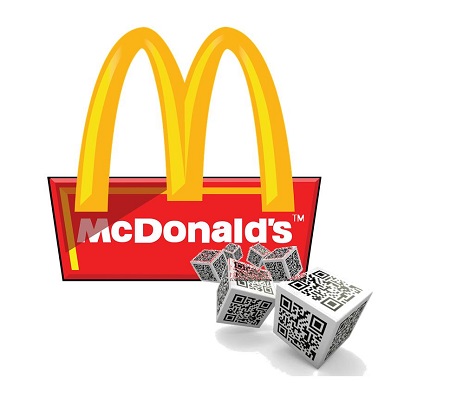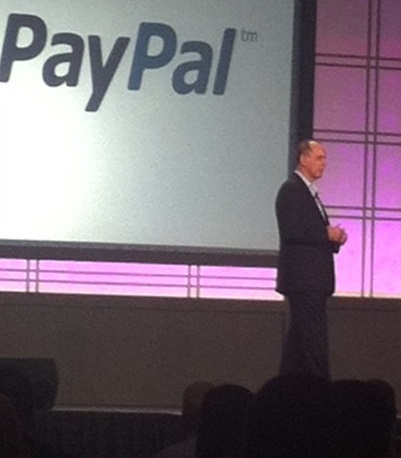A pilot program is now underway using QuickPay for WeChat customers in the country.
McDonald’s is now running a pilot project using QR code payments with a cashback offer. Customers using WeChat can get 50% cash back when they use the QuickPay service. This is exclusive to select restaurants in South Africa.
The goal is to encourage people who are already using the social messaging app to pay with their smartphones.
Participating restaurants are located in Cape Town and Johannesburg. Customers using the WeChat mobile app are being offered a special 50% cashback offer. This is mean to encourage them to use the QuickPay QR code payments at McDonald’s in a participating location.
 This incentive is meant to help to encourage customers to try the mobile payments for the first time. By showing them how easy it is to pay for an order simply by presenting the QR codes at the point of sale so they can be scanned, McDonald’s hopes that consumers will be taken with the service and will continue to use it.
This incentive is meant to help to encourage customers to try the mobile payments for the first time. By showing them how easy it is to pay for an order simply by presenting the QR codes at the point of sale so they can be scanned, McDonald’s hopes that consumers will be taken with the service and will continue to use it.
The QR code payment cashback offer is available to the first 20,000 customers to use the service.
Those customers will receive 50% cash back when they pay for their meals with their smartphones. According to the McDonald’s South Africa chief marketing officer, Daniel Padiachy, “We are continuously searching for innovative ways to enhance our customers’ experience.” He added that “We believe that WeChat’s Quick Pay will further assist us in upholding these principles.”
The WeChat app first launched in the country in November 2015. The app is owned by Tencent, the ecommerce giant from China. Payments through the service have been made possible in South Africa through a partnership with Standard Bank.
WeChat makes it possible for users to make P2P transfers as well as to scan QR codes to make payments in-store at any of 30,000 merchants across the country that support the SnapScan platform. The mobile app can also be used to purchase wireless services such as airtime and data, as well as to pay certain utility bills.
While Quick Pay is functioning within the SnapScan WeChat feature, that QR code payments option is currently available exclusively at McDonald’s.
The digital wallet giant has chosen its new tack to achieve dominance in this increasingly crowded space.
PayPal used the massive Money2020 event in Las Vegas to reveal that it is getting behind QR codes as a part of its broader plans for mobile payments that will carry their online successes over to the in-store experience.
The decision to choose the barcodes has added to a trend beginning to turn away from NFC technology.
The decision that PayPal has made to use QR codes as a central element of their mobile payments experience underscores the progress that the technology has made among both merchants and consumers. It reflects the fact that consumers have become familiar with the black and white squares, and know how to scan them using their mobile devices.
 The QR codes will provide a boost to the security level of the Beacon solution that was launched last month.
The QR codes will provide a boost to the security level of the Beacon solution that was launched last month.
PayPal has taken a considerable focus on moving into the brick and mortar experience, along with a flood of other industry giants that are hoping to become leaders in the mobile payments sphere. Though NFC technology had been believed to be a possible standard in this area, the very slow adoption of Google Wallet, Isis, and other wallets based on near field communications has caused many providers to look to other tech possibilities.
The alternative that stood out at Money2020 was QR codes, which were selected for integration by not only PayPal, but also MasterCard – a provider that has based its services on NFC for some time now, and intend to continue this over many different types of devices as a complement to the use of the barcodes.
Vice president of retail and prepaid products at PayPal, Don Kingsborough, was present at Money2020 and explained that the adoption of the QR codes is a part of the overall trend toward the omni-channel experience. This is a more seamless version of the multi-channel experience, where one crosses into the next, instead of remaining parallel to one another.
To illustrate the concept using PayPal technology, a consumer could walk into a store with her mobile device. At that time, the PayPal Beacon provides that individual with an alert regarding a deal that is going on in the store. The consumer can then pick up the item and bring it to the point of sale, where the transaction can be completed using mobile payments that are secured with the scans of QR codes. In this way, the in-store, online, and mobile experiences coexist and provide the consumer with a considerably enhanced shopping experience.
 This incentive is meant to help to encourage customers to try the mobile payments for the first time. By showing them how easy it is to pay for an order simply by presenting the QR codes at the point of sale so they can be scanned, McDonald’s hopes that consumers will be taken with the service and will continue to use it.
This incentive is meant to help to encourage customers to try the mobile payments for the first time. By showing them how easy it is to pay for an order simply by presenting the QR codes at the point of sale so they can be scanned, McDonald’s hopes that consumers will be taken with the service and will continue to use it.
 The QR codes will provide a boost to the security level of the Beacon solution that was launched last month.
The QR codes will provide a boost to the security level of the Beacon solution that was launched last month.